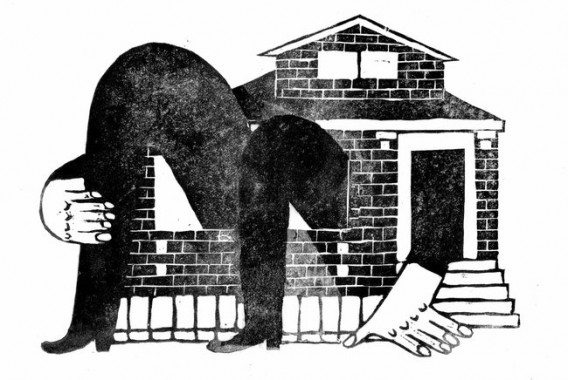















February 10, 2012 | permalink

This summer, I had the honor and privilege of working with the architects, artists, and urban planners Jeanne Gang, Roberta Feldman, Theaster Gates, Kate Orff, and Rafi Segal along with dozens of others (most notably Jeana Ripple and Katrina Stoll) on an exhibition for New York’s Museum of Modern Art titled Foreclosed: Rehousing the American Dream, which re-imagines the future of American public housing and suburbia. Friday’s New York Times contains an op-ed written by me and Jeanne encapulating our team’s findings and prescriptions for suburbs like Cicero, Illinois (the site of our project), which have become the destination of choice for immigrants – opening the door to whole new set of problems which have been ignored in the post-bubble housing debate.
The exhibit itself opens on February 15th in the museum’s Architecture and Design galleries. If you’d like to learn more about our project and the exhibit, MoMA is hosting a public symposium on Friday, Feb. 17 featuring each of the five teams’ leaders in conversation about their projects. Jeanne is scheduled to speak about ours at 2:30 PM; tickets and more information are available here. The op-ed itself begins this way:
RECENT efforts to fix the housing market – including Thursday’s $26 billion settlement with five of the nation’s biggest banks – have focused purely on the financial aspects of the slump. A permanent solution, however, must go further than money to address issues that have been at the core of the crisis but have been wholly ignored: design and urban planning.
Too often during the bubble, banks and builders shunned thoughtful architecture and urban design in favor of cookie-cutter houses that could be easily repackaged as derivatives to be flipped, while architects snubbed housing to pursue more prestigious projects.
But better design is precisely what suburban America needs, particularly when it comes to rethinking the basic residential categories that define it, but can no longer accommodate the realities of domestic life. Designers and policy makers need to see the single-family house as a design dilemma whose elements – architecture, finance and residents’ desires – are inextricably linked.
The rest of the article is available at The New York Times.

» Folllow me on Twitter.
» Email me.
» See upcoming events.

Greg Lindsay is a generalist, urbanist, futurist, and speaker. He is a non-resident senior fellow of the Arizona State University Threatcasting Lab, a non-resident senior fellow of MIT’s Future Urban Collectives Lab, and a non-resident senior fellow of the Atlantic Council’s Scowcroft Strategy Initiative. He was the founding chief communications officer of Climate Alpha and remains a senior advisor. Previously, he was an urban tech fellow at Cornell Tech’s Jacobs Institute, where he explored the implications of AI and augmented reality at urban scale.

January 31, 2024
Unfrozen: Domo Arigatou, “Mike 2.0”
January 22, 2024
The Future of Generative AI in Architecture, Engineering, and Construction
January 18, 2024
The Promise and Perils of the Augmented City
January 13, 2024
Henley & Partners: Generative AI, Human Labor, and Mobility

----- | January 22, 2024
The Future of Generative AI in Architecture, Engineering, and Construction
----- | January 1, 2024
----- | August 3, 2023
CityLab | June 12, 2023
Augmented Reality Is Coming for Cities
CityLab | April 25, 2023
The Line Is Blurring Between Remote Workers and Tourists
CityLab | December 7, 2021
The Dark Side of 15-Minute Grocery Delivery
Fast Company | June 2021
Why the Great Lakes need to be the center of our climate strategy
Fast Company | March 2020
How to design a smart city that’s built on empowerment–not corporate surveillance
URBAN-X | December 2019
CityLab | December 10, 2018
The State of Play: Connected Mobility in San Francisco, Boston, and Detroit
Harvard Business Review | September 24, 2018
Why Companies Are Creating Their Own Coworking Spaces
CityLab | July 2018
The State of Play: Connected Mobility + U.S. Cities
Medium | May 1, 2017
Fast Company | January 19, 2017
The Collaboration Software That’s Rejuvenating The Young Global Leaders Of Davos
The Guardian | January 13, 2017
What If Uber Kills Public Transport Instead of Cars
Backchannel | January 4, 2017
The Office of the Future Is… an Office
New Cities Foundation | October 2016
Now Arriving: A Connected Mobility Roadmap for Public Transport
Inc. | October 2016
Why Every Business Should Start in a Co-Working Space
Popular Mechanics | May 11, 2016
Can the World’s Worst Traffic Problem Be Solved?
The New Republic | January/February 2016